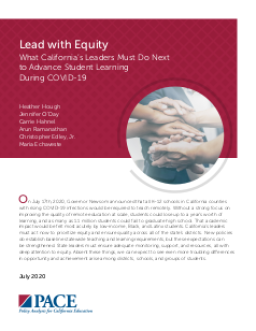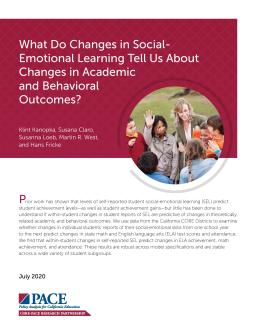Research to Guide Distance and Blended Instruction
Published
Summary
This suite of publications provides 10 recommendations based on the PACE report to help educators and district leaders provide high-quality instruction through distance and blended learning models in the 2020-21 school year. Despite the challenges of COVID-19, research can guide decisions about student learning and engagement. These recommendations can be used as a framework to prioritize quality instruction.
What California’s Leaders Must Do Next to Advance Student Learning During COVID-19
Published
Summary
On July 17th, 2020, Governor Newsom announced that all K–12 schools in California counties with rising COVID-19 infections would be required to teach remotely. Without a strong focus on improving the quality of remote education at scale, students could lose up to a year’s worth of learning, and as many as 1.1 million students could fail to graduate high school. That academic impact would be felt most acutely by low-income, Black, and Latinx students. California’s leaders must act now to prioritize equity and ensure quality across all of the state’s districts. New policies do establish baseline...
Published
Summary
This study used data from California CORE Districts to explore whether changes in students' self-reported social-emotional learning (SEL) predicted changes in academic outcomes and attendance. The findings revealed that within-student changes in SEL were positively associated with improvements in English language arts (ELA) and math achievement, as well as attendance, and were consistent across various student subgroups.
Published
Summary
Governor Newsom suggested a staggered calendar for the fall to get students back in school. While multi-track calendars have shown slight negative effects on learning, the current situation would have clear learning benefits and help parents and teachers. However, there is no evidence that multi-track calendars can control COVID-19 transmission. Schools should look at evidence from other countries and partner with local communities to test aggressively for the virus if implementing this approach.



